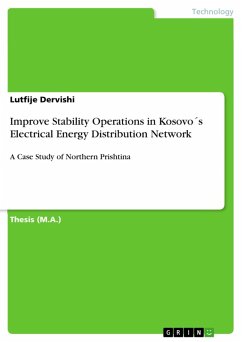Doctoral Thesis / Dissertation from the year 2022 in the subject Engineering - Power Engineering, Anna University (Sri Ramakrishna Engineering College), course: PhD in Mechanical Engineering, language: English, abstract: The photovoltaic thermal (PV/T) based system is a newer, more efficient substitute for the conventional form of the PV module. A PV/T system is a combined product of a standard PV module and solar thermal collector components that generates both electrical power and heat from a single integrated unit. The thermal collector components absorb the excess heat with the help of a working medium like water, air and nanofluid from the PV module and utilise it for domestic and industrial applications. Therefore, producing electrical power and heat from a single PV/T system is an intellectual concept that can meet both energy requirements. A novel Sandwich Glazed Photovoltaic (SGPV) module has been designed and fabricated to be used in the photovoltaic thermal system instead of the standard photovoltaic (SPV) module to address the problem of overheating. However, the bottom layer material and geometry of the PV module were changed in this work to improve the performance of the system. Initially, the temperature in the various layers and the photovoltaic efficiency of SPV and SGPV modules were obtained from the experiments. Furthermore, 3D models of SPV and SGPV modules were developed using Solid Works software, and temperature distribution and heat flow within the modules were investigated using ANSYS software. Finally, the mechanism behind the change in photovoltaic efficiency with respect to temperature is determined from the experiment and thermal analysis results. The maximum photovoltaic efficiency of the SPV and SGPV modules was 10.8% and 11.1%, respectively, and it was discovered that the SGPV module outperforms the SPV module. After that, the Sandwich Glazed Photovoltaic Thermal (SGPV/T) system was developed using the SGPV module. Subsequently, the photovoltaic, thermal, and overall efficiency of the proposed system were assessed by experimentation and compared with the standard PV module. Furthermore, the programmed electrical and thermal models are simulated using MATLAB for comparative analysis. Subsequently, the experiment results were compared with the MATLAB Simulation results and found that the performance and outlet water temperature of the SGPV/T system are significantly improved with an average photovoltaic, thermal and overall efficiency of 9.67%, 41.34% and 66.78%, respectively. The findings, specifications and novelty of the proposed system were compared to previous studies.









